Indoor Visiting

How should I spend a rainy weekend in a city ?
This text provides a guide on how to spend a rainy weekend in a city. It suggests staying indoors and enjoying the coziness of home by reading a book, watching movies or TV shows, and cooking or baking something delicious. It also recommends visiting indoor attractions like museums and art galleries, shopping malls, and indoor sports facilities. The text suggests pampering oneself with a spa day or attending a yoga or meditation class. Socializing and networking at events or meetups or visiting local cafes is another option. Lastly, it encourages embracing the rain outdoors by taking a walk or capturing the beauty of the city through photography.

How can I learn more about the history and culture of a heritage site before visiting ?
This text offers detailed steps on how to enrich your knowledge before visiting heritage sites. It suggests reading books and articles, utilizing online resources, listening to podcasts and audio tours, visiting museum exhibits, connecting with local contacts, and accessing academic papers and research. The goal is to appreciate the site's historical context and cultural significance, making the visit more meaningful.

What are the benefits of visiting heritage sites ?
Visiting heritage sites offers a plethora of benefits that extend beyond mere sightseeing. These sites, often recognized for their cultural, historical, or natural significance, provide a unique opportunity to connect with the past and learn about different cultures and environments. Here are some of the key advantages of exploring these treasures: ### 1. **Educational Opportunities** Heritage sites serve as open-air classrooms where visitors can gain firsthand knowledge about history, architecture, art, and nature. They offer a tangible connection to the past, allowing people to understand how societies have evolved over time. #### Key Takeaways: - **Historical Context**: Learn about significant events and periods by visiting the actual locations where they occurred. - **Cultural Insights**: Understand the customs, traditions, and way of life of different civilizations. - **Environmental Learning**: Natural heritage sites teach about ecosystems, biodiversity, and geological formations. ### 2. **Cultural Preservation** By visiting these sites, travelers contribute to the preservation of cultural heritage. The revenue generated from tourism can be used to maintain and protect these places for future generations. #### Importance: - **Support Conservation**: Financial support through visitor fees aids in restoration and maintenance projects. - **Raise Awareness**: Increase public consciousness about the importance of preserving our shared heritage. ### 3. **Economic Benefits** Heritage tourism boosts local economies by creating jobs, supporting small businesses, and promoting regional development. #### Economic Impact: - **Job Creation**: From site management to hospitality services, heritage sites create employment opportunities. - **Local Businesses**: Local artisans, guides, and restaurants benefit from increased visitor traffic. ### 4. **Personal Enrichment** Exploring heritage sites can be a profoundly enriching experience that broadens one's perspectives and fosters appreciation for different cultures and histories. #### Personal Growth: - **Broadened Horizons**: Understand diverse ways of life and appreciate the beauty of cultural diversity. - **Reflection and Inspiration**: Reflect on human achievements and find inspiration in the creativity and resilience of past societies. ### 5. **Entertainment and Leisure** Beyond educational and cultural benefits, visiting heritage sites is also an enjoyable leisure activity that allows individuals and families to spend quality time together while engaging in a meaningful activity. #### Fun Facts: - **Family-Friendly**: Many sites offer activities and tours tailored for families, making them great for vacations. - **Photography**: Heritage sites often provide stunning visual experiences and photo opportunities. ### 6. **Sustainable Tourism** Many heritage sites are part of sustainable tourism initiatives that aim to minimize environmental impact and ensure the long-term preservation of cultural and natural resources. #### Sustainability Efforts: - **Low-Impact Activities**: Encourage walking, cycling, or using public transport to reduce carbon footprints. - **Eco-friendly Practices**: Some sites implement green practices like recycling, water conservation, and waste reduction.
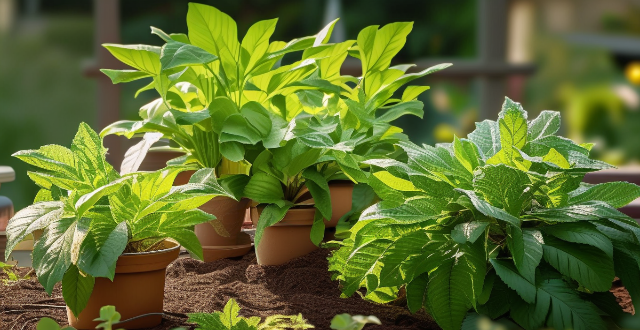
How can I revive a dying indoor plant ?
Reviving a dying indoor plant requires patience, care, and attention to detail. Here are some steps you can take to help your plant recover: Identify the problem, adjust watering schedule, provide adequate sunlight, fertilize appropriately, prune dead leaves and stems, repot if needed, monitor for pests and diseases, maintain humidity levels. By following these steps and providing regular care and attention, you can revive a dying indoor plant and help it thrive once again.
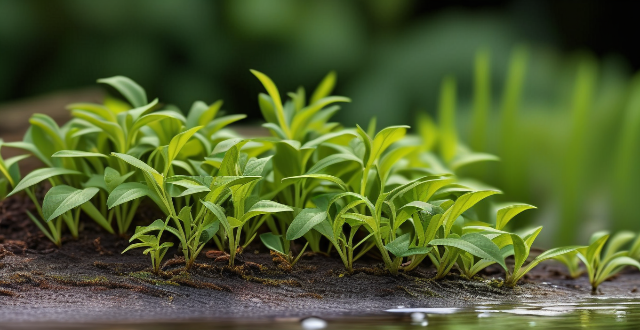
How often should I water my indoor plants ?
Indoor plants require proper watering to thrive. The frequency of watering depends on soil moisture, plant type, and environmental conditions. Most houseplants benefit from being watered every 7-14 days, while succulents and cacti can go longer between waterings. It's important to check the soil before watering and adjust your routine based on the plant's health and growth patterns. With proper care, your indoor plants will thrive and bring life to your space.
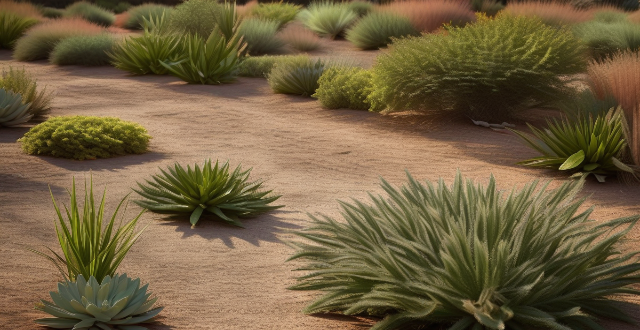
What kind of soil is best for indoor plants ?
The ideal soil for indoor plants should be well-draining, lightweight, and rich in nutrients. It should contain ingredients like perlite or sand to improve drainage, be lightweight to allow better aeration and root growth, and provide essential nutrients such as nitrogen, phosphorus, and potassium. Popular soil mixes for indoor plants include potting soil mix, coco coir mix, orchid bark mix, and cactus and succulent mix. Each of these mixes caters to different types of plants and their specific needs.

What kind of indoor games can parents play with their children to strengthen their bond ?
The article provides a list of indoor games that can help strengthen the bond between parents and children. The games include board games like Monopoly and Chess, card games such as Uno and Go Fish, puzzles and brain teasers like Sudoku and crossword puzzles, arts and crafts activities, indoor treasure hunts, and cooking/baking projects. These games not only provide entertainment but also offer opportunities for learning and quality time spent together.

What is the relationship between energy-efficient buildings and indoor air quality ?
This article explores the relationship between energy-efficient buildings and indoor air quality, highlighting both positive and negative interactions. It defines energy efficiency and indoor air quality, outlines strategies for improving air quality in energy-efficient buildings, and concludes that it is possible to achieve both goals through careful design and maintenance practices.
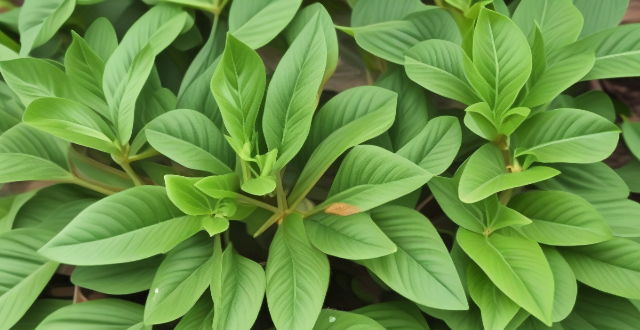
Should I use fertilizer for my indoor plants, and if so, how often ?
Fertilization is crucial for indoor plants, providing essential nutrients for growth. The need for fertilizer depends on factors like plant type, soil quality, and light exposure. Most indoor plants benefit from monthly fertilization during the growing season, while slow-growing plants may need it less frequently. Signs of nutrient deficiency can guide adjustments to the fertilization schedule. Choosing the right fertilizer involves considering its type (synthetic or organic) and NPK ratio. Proper application includes diluting the fertilizer, watering beforehand, and avoiding direct contact with leaves and stem. Balancing nutrients and care ensures healthy plant growth without the risks of over-fertilization.
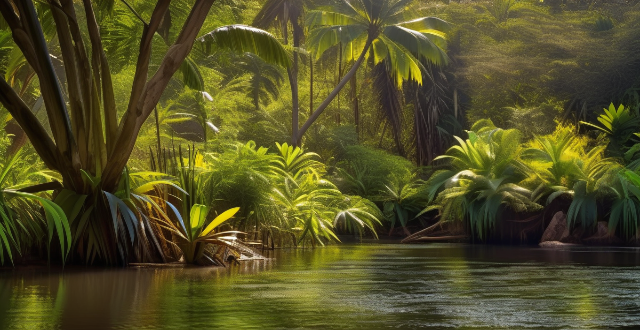
Is it necessary to mist indoor plants regularly ?
Is misting indoor plants necessary? Misting can increase humidity and cleanliness, but also lead to over-watering, pests, and disease. It's beneficial for tropical plants and during dry seasons, but not always necessary. Use warm water, avoid direct sunlight, target leaves, and don't overdo it.

How do I prune my indoor plants correctly ?
Pruning indoor plants is crucial for their health, shape, and beauty. Here's a step-by-step guide on how to prune your indoor plants correctly: 1. **Assess the Plant**: Identify any dead or damaged leaves, stems, or branches and remove them first to prevent disease and insect infestations. 2. **Gather the Right Tools**: Sharp scissors or pruners, pruning shears for larger plants with thicker stems, and garden gloves to protect your hands from sharp edges and sap. 3. **Start Pruning**: Follow guidelines for pinching back, shaping and thinning, and removing dead flowers and stems. 4. **Post-Pruning Care**: Water thoroughly after pruning, apply a balanced fertilizer, ensure adequate sunlight or artificial light, and monitor for signs of stress or disease following pruning.
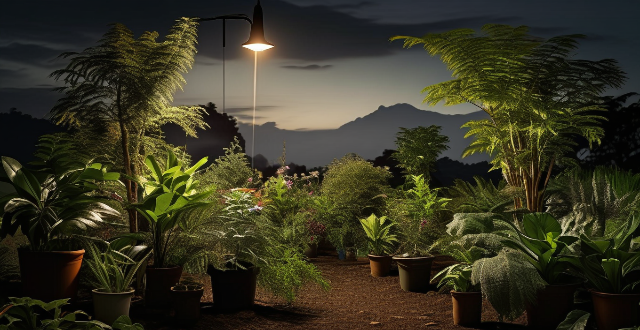
What is the ideal temperature for indoor plant growth ?
Indoor plants generally thrive in temperatures between 65°F to 75°F during the day and slightly cooler at night, along with proper humidity and air circulation. Maintaining these conditions helps promote healthy growth and flowering. Use a thermometer, avoid drafts, and adjust heating or cooling as needed to keep plants comfortable.

How much sunlight do indoor plants need ?
Indoor plants require sunlight for photosynthesis, but the amount needed varies by species. General guidelines include low light tolerance for plants like Peace Lily and Snake Plant, medium light requirements for Dracaena and Pothos, and high light preference for Cacti and Succulents. Key considerations involve window orientation and artificial lighting. Success tips include researching plant needs, monitoring response, and gradual adjustment to new lighting conditions.
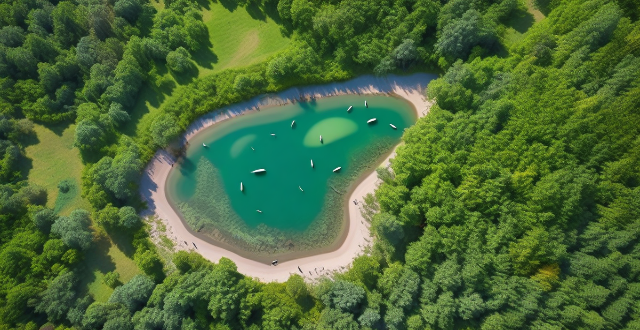
What are some popular eco-tourism destinations around the world ?
Eco-tourism is a form of tourism that focuses on conserving the environment and improving the well-being of local communities. Some popular eco-tourism destinations around the world include Costa Rica, New Zealand, Galapagos Islands, Iceland, and Borneo. In Costa Rica, visitors can enjoy bird watching, hiking in national parks, visiting turtle nesting sites, and surfing and snorkeling in the Pacific Ocean. In New Zealand, visitors can visit glaciers and fiords, trek through national parks, watch whales and dolphins in the Bay of Islands, and participate in Maori cultural experiences. The Galapagos Islands offer snorkeling with sea lions and marine iguanas, watching giant tortoises and land iguanas in their natural habitat, hiking through volcanic landscapes, and visiting research stations and learning about conservation efforts. Iceland offers watching the Northern Lights, hiking through national parks and nature reserves, visiting geothermal areas and bathing in natural hot springs, and whale watching tours in the Atlantic Ocean. Finally, Borneo offers visiting orangutan sanctuaries and rehabilitation centers, trekking through rainforests and visiting caves, river cruising and exploring mangrove forests, and visiting traditional villages and experiencing local culture.
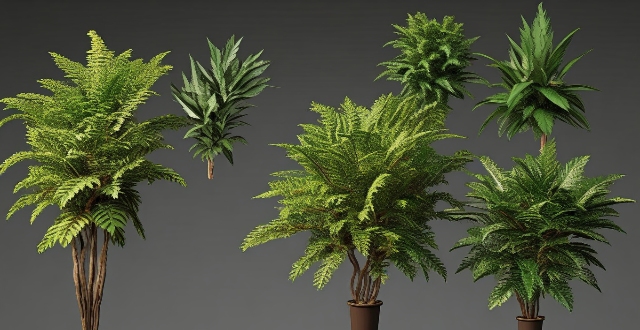
What are the best indoor plants for low-light conditions ?
The best indoor plants for low-light conditions include Pothos, Snake Plant, Philodendron, Peace Lily, and ZZ Plant. These plants are adaptable, easy to care for, and known for their ability to purify the air. They come in various sizes and shapes, making them suitable for different preferences and spaces.

How do I propagate my indoor plants ?
Propagating indoor plants is a rewarding activity that allows you to expand your collection without spending much money. Here's a step-by-step guide on how to propagate your indoor plants: 1. Choose the right plant: Some common houseplants that are easy to propagate include pothos, succulents, snake plants, and spider plants. Make sure to choose a plant that is healthy and free from pests or diseases. 2. Gather your tools: You will need some basic tools for propagation, including sharp scissors or pruners, clean pots with drainage holes, potting soil, and possibly rooting hormone (depending on the plant). 3. Choose a method of propagation: There are several methods of propagation, including stem cuttings, leaf cuttings, division, and layering. The method you choose will depend on the type of plant you have. 4. Prepare your cuttings: Using sharp scissors or pruners, make clean cuts just below a node (the point where leaves attach to the stem) on your chosen plant. Remove any lower leaves that would be below the soil line as these can rot and cause problems later on. 5. Plant your cuttings: Fill your pots with fresh potting soil making sure there are drainage holes at the bottom. Make a small hole in the soil and insert your cutting about halfway down. Water gently to settle the soil around the cutting. 6. Provide proper care: Place your newly planted cuttings in a warm bright location but out of direct sunlight Keep the soil moist but not waterlogged Avoid letting it dry out completely You may also want to cover your pot with a plastic bag or dome to create a humid environment which helps promote root growth. 7. Be patient and observe growth It can take several weeks to months for your cuttings to develop roots and new growth Once you see new leaves forming you know that your plant has successfully rooted and is ready to continue growing independently. 8. Transplant if needed Once your plant has outgrown its current pot or seems rootbound it's time to transplant it into a larger container with fresh potting soil Be gentle when handling the delicate new roots during transplantation.

What impact does air pollution have on indoor sports facilities and athletes' health ?
Impact of Air Pollution on Indoor Sports Facilities and Athletes' Health: - **On Indoor Sports Facilities**: - Reduced visibility, unpleasant odors and tastes, equipment damage, and increased energy consumption due to air pollutants. - **On Athletes' Health**: - Respiratory problems, cardiovascular disease, asthma attacks, skin irritation, fatigue and lethargy, cognitive impairment, and immune system suppression due to exposure to air pollutants.

How do I respect the local environment when visiting an island ?
When visiting an island, it is important to respect the local environment. Here are some tips on how to do so: 1. Follow local customs and traditions by researching before you go and being mindful of your actions. 2. Reduce your carbon footprint by choosing eco-friendly transportation and packing light. 3. Conserve water and electricity by turning off lights and appliances when not in use and using water wisely. 4. Respect wildlife and nature by not disturbing wildlife and staying on designated paths. 5. Support sustainable tourism practices by choosing eco-friendly accommodations and participating in eco-friendly activities. By following these tips, you can help protect the local environment and contribute to a more sustainable future for the island community.

Are there any indoor plants that are safe for pets ?
Indoor plants can be a great addition to any home, but it's important to choose ones that are safe for pets. Here are some options: 1. Spider Plant 2. Boston Fern 3. Peace Lily 4. Bamboo Palm 5. Christmas Cactus 6. Rubber Plant 7. Ponytail Palm 8. Friendship Plant 9. Parlor Palm 10. Heartleaf Philodendron
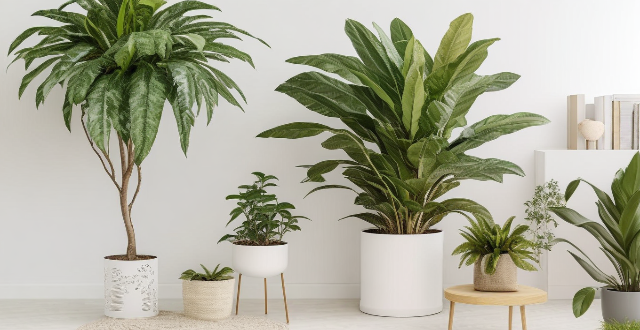
How do I choose the right pot for my indoor plants ?
Choosing the right pot for indoor plants is crucial for their growth and development. Consider factors like plant size, drainage needs, material, style, and maintenance when selecting a pot. Ensure proper drainage to prevent root rot, choose materials that suit your plant's needs and your home's style, and be prepared for the care requirements of different pot types.

How do I prevent pests from infesting my indoor plants ?
To prevent pests from infesting your indoor plants, maintain proper hygiene, optimize growing conditions, utilize natural repellents and treatments, try physical removal methods, consider biological control, and use chemical control as a last resort. Regular plant inspection is also key for early detection of potential problems.
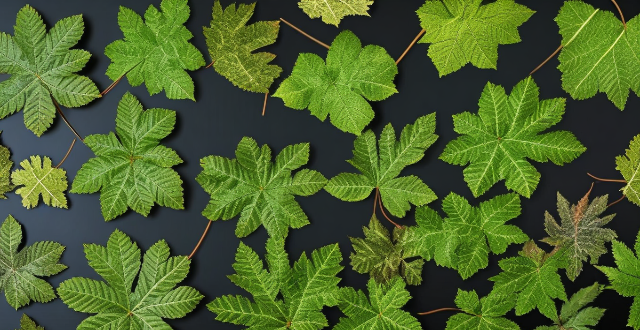
Why are the leaves of my indoor plant turning yellow ?
Yellowing leaves on indoor plants can indicate various issues, including improper watering, nutrient imbalances, unsuitable lighting, temperature stress, pest infestations, diseases, physical damage, or natural aging. Addressing these concerns involves adjusting watering habits, providing adequate light, using appropriate fertilizers, maintaining ideal temperatures, monitoring for pests and diseases, handling plants gently, and regular pruning. Understanding and responding to these factors can help restore the plant's health and prevent future leaf discoloration.
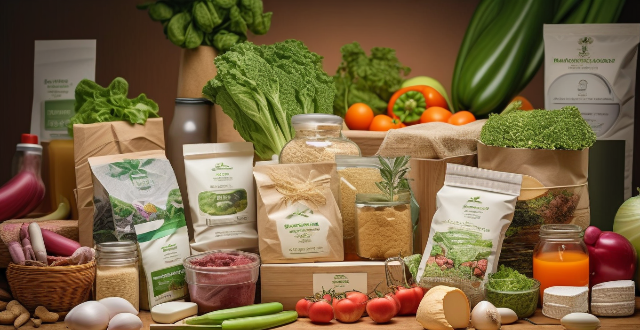
How do I know if a product is truly organic ?
Identifying truly organic products requires looking for certification labels, checking the ingredient list, researching the manufacturer or brand, and visiting farmers markets and local stores. Certification labels such as USDA Organic, Euro-leaf, and JAS indicate that the product meets specific standards for organic production. The ingredient list should indicate that all ingredients are organic and free from GMOs. Researching the manufacturer or brand can provide information about their farming practices and quality control processes. Visiting farmers markets and local stores allows you to ask questions about the products and see them firsthand. By following these tips, you can ensure that you are getting genuine organic products that are free from harmful chemicals and pesticides.

Can you recommend any air-purifying indoor plants ?
Sure, here are some air-purifying indoor plants that I recommend: # 1. Snake Plant (Sansevieria trifasciata) The Snake Plant is a popular choice for its ability to absorb toxins like formaldehyde and benzene from the air. It's also very low maintenance and can thrive in low light conditions. # 2. Spider Plant (Chlorophytum comosum) The Spider Plant is known for its long, spider-like leaves and ability to remove harmful chemicals like xylene and formaldehyde from the air. It's also easy to care for and can grow in a variety of lighting conditions. # 3. Peace Lily (Spathiphyllum wallisii) The Peace Lily is a beautiful plant that not only adds aesthetic value to your home but also helps to purify the air by removing toxins like ammonia, benzene, formaldehyde, and trichloroethylene. It prefers low to medium light and should be kept moist but not waterlogged. # 4. English Ivy (Hedera helix) English Ivy is a versatile plant that can be grown as a ground cover or trained to climb walls. It's effective at removing airborne toxins like formaldehyde, benzene, and carbon monoxide. However, it requires moderate to high light and regular watering. # 5. Bamboo Palm (Chamaedorea seifrizii) The Bamboo Palm is a tropical plant that can help filter out formaldehyde, benzene, and trichloroethylene from the air. It prefers bright, indirect light and should be kept moist but not waterlogged. # 6. Rubber Plant (Ficus elastica) The Rubber Plant is known for its large, glossy leaves and ability to remove toxins like formaldehyde from the air. It prefers bright, indirect light and should be watered when the top inch of soil is dry. # 7. Golden Pothos (Epipremnum aureum) Golden Pothos is a trailing plant that can be grown in a hanging basket or trained to climb walls. It's effective at removing toxins like formaldehyde, benzene, and xylene from the air. It prefers bright, indirect light and should be kept moist but not waterlogged. # 8. Aloe Vera (Aloe barbadensis) Aloe Vera is a succulent plant that's known for its healing properties and ability to remove formaldehyde from the air. It prefers bright, direct light and should be watered once the soil is completely dry. # 9. Boston Fern (Nephrolepis exaltata) Boston Fern is a lush, green fern that can help purify the air by removing toxins like formaldehyde and xylene. It prefers high humidity and should be kept moist but not waterlogged. # 10. Chinese Evergreen (Aglaonema modestum) Chinese Evergreen is a low-maintenance plant that can help remove toxins like benzene and formaldehyde from the air. It prefers low to medium light and should be kept moist but not waterlogged.

How do I troubleshoot common issues with my iPhone without visiting an Apple Store ?
This text provides a guide to troubleshooting common issues with iPhones, such as battery drain, Wi-Fi connectivity problems, app crashes, and slow performance. It suggests steps like checking battery usage, reducing screen brightness, turning off unnecessary features, restarting the device, forgetting and reconnecting to Wi-Fi networks, resetting network settings, updating apps, clearing app cache, reinstalling apps, closing unused apps, freeing up storage space, and resetting all settings. If these steps do not resolve the issues, it recommends contacting Apple Support or visiting an Apple Store for further assistance.
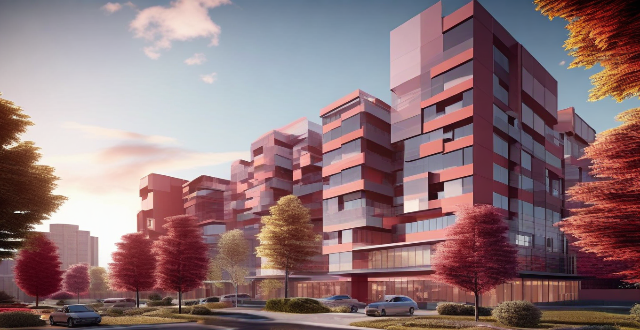
What is the role of insulation in energy-efficient buildings ?
Insulation is crucial for energy-efficient buildings, reducing heat loss and gain, improving comfort and indoor air quality, lowering energy consumption and costs, enhancing building durability and longevity, and meeting energy efficiency standards.

How can architects and engineers incorporate sustainable practices into their projects ?
Incorporating Sustainable Practices into Architecture and Engineering Projects Architects and engineers play a crucial role in designing buildings and structures that are energy-efficient, environmentally friendly, and promote sustainability. To incorporate sustainable practices into their projects, they can follow these strategies: 1. **Conducting a Sustainability Assessment**: Identify goals based on factors like energy consumption, water usage, waste reduction, and indoor air quality. Evaluate the potential environmental impacts of the proposed design, construction, and operation phases. 2. **Designing for Energy Efficiency**: Orient buildings to maximize natural light and heat, use daylighting techniques, and incorporate shading devices to reduce solar gain. Select high-efficiency HVAC systems that minimize energy consumption while maintaining comfort. Integrate solar panels, wind turbines, or geothermal systems to generate clean energy on-site. 3. **Optimizing Water Use**: Collect and store rainwater for non-potable uses such as irrigation and toilet flushing. Install low-flow faucets, showerheads, and dual-flush toilets to reduce water consumption. Use plants adapted to local climate conditions to reduce the need for irrigation and maintenance. 4. **Using Sustainable Materials**: Choose building materials with high recycled content, such as steel, glass, and concrete. Source materials locally to reduce transportation emissions and support the local economy. Select paints, sealants, and flooring materials with low VOC emissions to improve indoor air quality. 5. **Reducing Waste during Construction**: Implement a comprehensive waste management plan to divert construction debris from landfills through recycling and reuse. Use prefabricated components to minimize on-site waste and shorten construction timelines. 6. **Enhancing Indoor Environmental Quality (IEQ)**: Ensure proper ventilation to maintain acceptable indoor air quality levels. Incorporate design elements that allow for natural cross-ventilation to reduce reliance on mechanical systems. Use materials with sound-absorbing properties to improve acoustic performance and occupant comfort. 7. **Considering Life Cycle Assessment (LCA)**: Evaluate the life cycle impacts of materials, considering extraction, production, transportation, use, and end-of-life disposal. Design buildings that require minimal maintenance and have efficient operational processes to reduce long-term environmental impacts. 8. **Promoting Sustainable Transportation**: Locate projects near public transportation hubs to encourage the use of mass transit. Provide ample bicycle parking and shower facilities to promote cycling as a means of commuting. Create incentives for carpooling, such as preferred parking spots or reduced parking fees, to reduce single-occupancy vehicle trips.

How does ecological design influence the well-being of building occupants ?
Ecological design, also known as sustainable or green design, is a method of architecture and building that focuses on reducing negative environmental impacts while improving occupant comfort and health. This design philosophy significantly affects the well-being of building occupants in various ways, from enhancing indoor air quality to fostering a connection with nature. Some key aspects through which ecological design enhances occupant well-being include: - Healthier Indoor Environment: Ecologically designed buildings often incorporate advanced ventilation systems that ensure the continuous flow of fresh, filtered air. The use of low VOC (Volatile Organic Compounds) materials reduces pollutants that can cause respiratory issues. Strategic placement of windows allows for ample natural light, reducing the need for artificial lighting and its associated energy consumption. Proper insulation and shading devices maintain comfortable temperatures without overreliance on heating and cooling systems. Orienting buildings to maximize solar gain in colder seasons and minimize it in warmer periods contributes to thermal comfort. - Increased Productivity and Comfort: Eco-friendly soundproofing materials can reduce noise pollution, creating a quieter and more focused work environment. Thoughtful layout planning can minimize noise disturbances and improve speech privacy. The use of window shades and tinting can reduce glare from excessive sunlight, ensuring visual comfort for occupants. Strategically placed reflective surfaces can bounce natural light deeper into spaces, reducing the need for bright artificial lighting. - Mental and Emotional Benefits: Incorporating elements of nature such as plants, water features, and natural materials can reduce stress and increase happiness among occupants. Providing views to the outside world, especially of natural settings, has been shown to boost mood and well-being. Ecological designs often include multi-purpose spaces that can be adapted for various activities, contributing to a sense of variety and adaptability. Designs that blur the line between indoor and outdoor spaces encourage a connection to the outdoors and can enhance mental well-being. - Long-Term Sustainability: Integrating solar panels or wind turbines can make buildings self-sufficient in energy, reducing reliance on non-renewable resources. Using durable, eco-friendly construction materials reduces the need for repairs and replacements, saving costs and reducing waste. Low Maintenance Design: Designing buildings to require minimal maintenance work ensures that they remain healthy, safe, and functional over extended periods.

What are the requirements for a tourist visa ?
The article provides a comprehensive list of general requirements for obtaining a tourist visa, which include having a valid passport, completing a visa application form, providing recent photographs, presenting a detailed travel itinerary, demonstrating financial stability, possessing health insurance, submitting an invitation letter if applicable, explaining the purpose of visit, and possibly offering a police clearance certificate. It emphasizes the importance of checking with the embassy or consulate of the destination country for specific instructions due to variations in requirements among different nations.